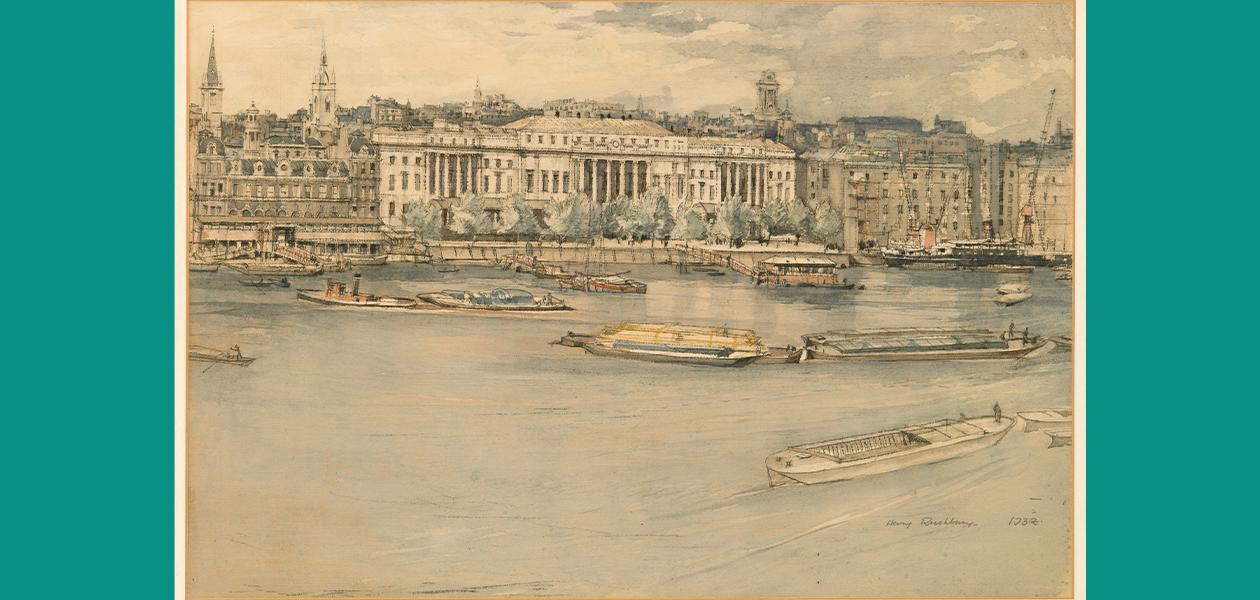CUSTOM HOUSE, LONDON, 1932
By Henry Rushbury (1889-1968)
Watercolour, ink and pencil on paper
Glen Bott Collection, University of Nottingham
This view of London from the Thames is by a master of urban scenery, the watercolourist and printmaker Henry Rushbury. The most prominent feature on the river front is the old Custom House, with its long neoclassical façade designed by David Laing and Robert Smirke. The emphasis placed on this building may be taken as an allusion to Canaletto, Rushbury’s great predecessor among painters of the Thames. Not only did Canaletto produce a celebrated series of views of London’s river, but the Dogana, the custom house of his native city of Venice, is an iconic motif in many of his pictures of the entrance to the Grand Canal.

Click on the picture to open up a bigger view.
Rushbury shows the city as it appeared in 1932, when the upper reach of the Pool of London, just below London Bridge, was still active as a port.
The city is presented here as a place of constant upheaval, loss and renewal, and the watercolour is valuable not only as a record of a historical moment, but also because it enables us to see what has survived and what has been lost, or at least lost to view.
The old Port of London Authority building is a conspicuous feature on the skyline: it was built between 1912 and 1922 and at the time – difficult for us to imagine now – it was one of the tallest structures in the city. (It has recently been re-purposed as a luxury hotel). In front of it, you can just make out the tower of the church of All Hallows-by-the-Tower, from which Samuel Pepys watched the devastating progress of the Great Fire of London in 1666. The church survived the Fire but was badly damaged in the Blitz in World War II: the tower remained intact, though it lost the little cupola we see in Rushbury’s watercolour.
To the left we see the towers and steeples of two churches, St Margaret Pattens and St Dunstan in-the-East, both designed by Christopher Wren after their medieval originals had been destroyed in the Fire. Both towers are examples of Wren’s rare exercises in the gothic mode. St Margaret came through the Blitz intact, but St Dunstan is now only a shell, and a public garden occupies the space where its congregation once gathered.
In recent years, the view painted by Rushbury has changed almost beyond recognition. True, the former Billingsgate Fish Market, prominent on the river front at the left, is still there, although it is now a hospitality venue. But the church towers, the Port Authority Building and indeed the whole of Rushbury’s pleasingly varied skyline have all vanished from sight behind a dense agglomeration of tall office blocks: the Gherkin, the Cheesegrater, the Salesforce Tower and many others. The warehouses and wharves have gone, needless to say, but even the old Custom House, that dignified historical survivor, now faces an uncertain future. After more than two hundred years of continuous occupation by the Customs, it has been sold to a property company, and is due to be vacated in 2021.
To find out more about the artist visit Art UK's website.